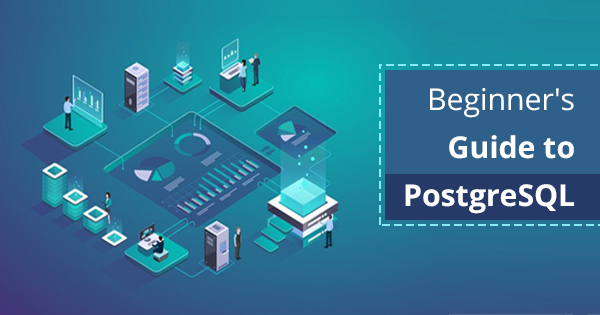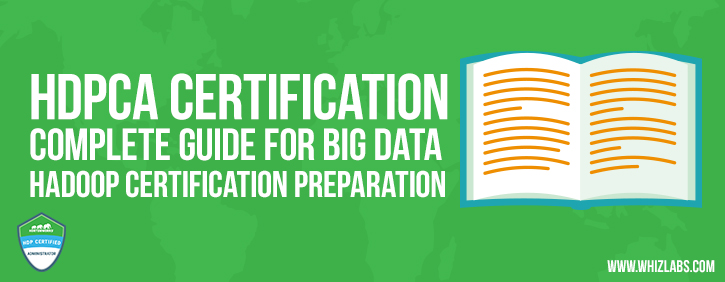Do you know that PostgreSQL is one of the best RDBMS alternatives and its demand is continuously increasing? To help you learn the fundamentals of PostgreSQL, here we bring a quick PostgreSQL tutorial.
The foremost aspect of technological infrastructure is a database. Enterprises need to store data for accessing later and also generates new data that has to be stored for the same purpose. In this case, you would need a database. So, what type of database is required for transactional data? What if you have to comply with the ACID (Atomicity, Consistency, Isolation, and Durability) conditions for the database? This is where you would need a Relational Database Management System (RDBMS).
Prior to RDBMS, it was practically difficult for many people to address the requirements of computing alongside data persistence. PostgreSQL is one of the notable RDBMS alternatives in the existing market. Therefore, it is evident to notice the demand for a PostgreSQL tutorial to understand its fundamentals. The following discussion would dive into the fundamentals of PostgreSQL to help you learn about it efficiently.
Check Now: Big Data Training Courses
Readers can reflect on the history of PostgreSQL, its definition, and functionalities in the following discussion. Furthermore, you would also find a comprehensive understanding of the working of PostgreSQL and the potential of PostgreSQL. In addition, the discussion would also offer a basic outline of the PostgreSQL landscape to deepen your understanding of PostgreSQL.
Origin of PostgreSQL
One of the first things in a PostgreSQL guide refers to a series of events that led to its formation. With respect to data storage, the reality of technology depends on the extent you are willing to trace back in history. Before 1960, various tools and techniques delivered data access functionalities with support for ensuring quality and management of control over data.
With the foundation of the Conference on Data Systems Languages (CODASYL) by the US Department of Defense in 1960, COBOL came into existence. The primary objective underlying the development of COBOL was to establish certain guidelines for ensuring data access and programming languages. So, magnetic tape drives with serial access gave way to magnetic tape drives with random data access privileges.
CODASYL provided the foundation for integrated data storage, which basically led to the Network Database Model. CODASYL also provided platforms for deriving and refining Data Manipulation Language (DML) and Data Definition Language (DDL) to facilitate querying/updating data or definition of the database schema. The initial systems by CODASYL started off through processing a single record at specific times.
The next phase of history in a PostgreSQL tutorial starts with the introduction of E.F. Codd. According to him, DBMS should reduce the burden of finding information on users. On the contrary, users should choose DBMS that could recognize simple commands for finding data according to their requirements.
Codd established a new way of organizing and accessing data in a groundbreaking paper by incorporating certain principles. One of the first principles is the independency of data access from the aspects of implementing hardware and storage. The second principle of E.F. Codd for the ideal DBMS was an automatic method for data navigation such as a high-level, non-procedural language.
This was also the time when IBM had started their work on System R, and some Berkley researchers had begun work on Interactive Graphics Retrieval System (Ingres). Ingres was subsequently developed and updated for including new features, user feedback, and rewrites for code maintainability. With this development, some setbacks were still evident. For example, lack of user-defined operators and system-defined abstract data types.
The page of PostgreSQL history actually started in 1982 and is a landmark in almost every PostgreSQL tutorial. The decision of Berkeley Researcher, Michael Stonebraker, for the development of PostIngres was the point where PostgreSQL found the roots for commercial popularity it enjoys today.
Michael Stonebraker wanted to develop a proprietary version of Ingres with features that can make it commercially applicable. The PostIngres was aimed at efficient semantic modeling of data with new features such as data types, attribute and procedure inheritance, user-defined operators, and user-defined procedures.
What is PostgreSQL?
With the reflection on the history of PostgreSQL, you can definitely understand the significance of this PostgreSQL tutorial. You can now confirm that PostgreSQL is the outcome of years of technological evolution in the world of databases. So, what exactly is it? The next obvious entry in any introduction to PostgreSQL would be its definition.
PostgreSQL is an object-relational database management system and open-sources in nature. It has different features for addressing fluctuations in workloads from single machines, web services with multiple concurrent users, and data warehouses. PostgreSQL leverages SQL and extends its capabilities for applications in a wide assortment of use cases other than just transactional data.
The most striking highlight of PostgreSQL is that it is the default database underlying the macOS Server. In addition, it is also available on all major operating systems such as Windows, Linux, and BSDs. In addition, it also receives support from the global development community, including individual contributors and companies.
SQL is the base of all the database languages. Enroll in the SQL Basics Training Course and start learning.
Features of PostgreSQL
The most important aspect of any PostgreSQL tutorial refers to its functionality. It is crucial for beginners to understand what exactly PostgreSQL does for achieving such popularity. PostgreSQL is basically a relational database and is a warehouse of relations among tuples representing entities and relationships.
Relations carry fixed-type attributes that represent properties of the entity alongside a primary key. Attribute types can be structured attributes like a procedure or an array or atomic attributes like a Boolean, an integer, or a floating-point. PostgreSQL provides adequate support for data transactions with the assurance of ACID. Let us dive deeper into the ACID attributes for PostgreSQL transactions,
- Atomicity involves the assumption of transactions as complete units. In this case, a transaction should either fail completely or succeed completely. If there is complete transaction failure, the database state remains unchanged.
- Consistency is possible by ensuring the existence of a database only in a valid database between transactions. It also implies that all the data written to a particular database should follow extant constraints, cascades, triggers, and associated combinations.
- Isolation is also an important data attribute in the case of PostgreSQL and is basically a derivative of concurrency control. Treatment of transactions in a sequential fashion prevents any chances of data corruption through concurrent or illegal transactions.
- Durability is one of the prominent attributes that is a common mention in almost every PostgreSQL tutorial. It provides assurance for the commitment of a transaction even in the event of system failure. Durability relies considerably on a comprehensive documentation of completed transactions.
So, basically, PostgreSQL has everything covered when it comes to modern database requirements. However, PostgreSQL is not limited solely to these features alone. Apart from SQL support, PostgreSQL can provide the following features,
- Automatically updatable views
- Sophisticated locking mechanism
- Maturity of server-side programming functionality
- Complete support for client-server network architecture
- Supporting multi-version concurrency control
- Support for JSON formats for linking with other data stores such as NoSQL
- Log-based and trigger-based mechanisms for replication SSL
- Exceptionally high availability and standby server
PostgreSQL Working Architecture
So, one can clearly notice how PostgreSQL is one of the most trusted RDBMS options in the present. The most prominent aspect that beginners must also focus on to learn PostgreSQL is a brief understanding of how it works. Core PostgreSQL ensures that data is fully-structured with a specific schema for adding records to the database. However, PostgreSQL continues to evolve because it is an open-source database management system without the need for recompiling.
New features are constantly being added to PostgreSQL while also ensuring SQL conformance. Beginners could refer to the basic system architecture of PostgreSQL to establish the foundation for understanding the intricacies of its functionality. Basically, PostgreSQL follows a client/server model, and the architecture relies on certain cooperating processes. The first component in PostgreSQL architecture is the server process.
The server process helps in the management of database files, performs actions on the database, and ensures verification of connections from client applications to the database. The user’s client or the frontend application helps in performing the database operations. Client applications could be diverse in nature, and certain client applications have the support of PostgreSQL distribution.
Use Cases of PostgreSQL
The final aspect of understanding the need to move beyond a PostgreSQL tutorial and dive deeper into learning PostgreSQL is the outline of its applications. PostgreSQL is presently one of the popular choices for DBMS across various sectors. The ACID compliance in PostgreSQL makes it an appropriate choice for the financial industry to facilitate Online Transaction Processing (OLTP).
PostgreSQL also provides a feature-packed GIS, known as PostGIS, with multiple functionalities for processing geometric data in various formats. Most important of all, PostgreSQL is the go-to option for creating websites that have massive traffic specifications.
Final Words
On a concluding note of this PostgreSQL tutorial, you can notice that there is more to learn about PostgreSQL. The information presented here showcases the fundamentals of PostgreSQL, starting from its origins to the various applications of PostgreSQL. Since its foundation, PostgreSQL has come a long way with open-source contributions for presenting a massive ecosystem that caters to the requirements of diverse industries.
If you want to capitalize on the career opportunities with PostgreSQL, then you should immediately find reliable training courses. Wide-ranging expertise in the basics, as well as fundamentals of PostgreSQL, can boost the career prospects of IT professionals. So, visit us and check out our Big Data training courses for a bright career!
- Cloud DNS – A Complete Guide - December 15, 2021
- Google Compute Engine: Features and Advantages - December 14, 2021
- What is Cloud Run? - December 13, 2021
- What is Cloud Load Balancing? A Complete Guide - December 9, 2021
- What is a BigTable? - December 8, 2021
- Docker Image creation – Everything You Should Know! - November 25, 2021
- What is BigQuery? - November 19, 2021
- Docker Architecture in Detail - October 6, 2021


